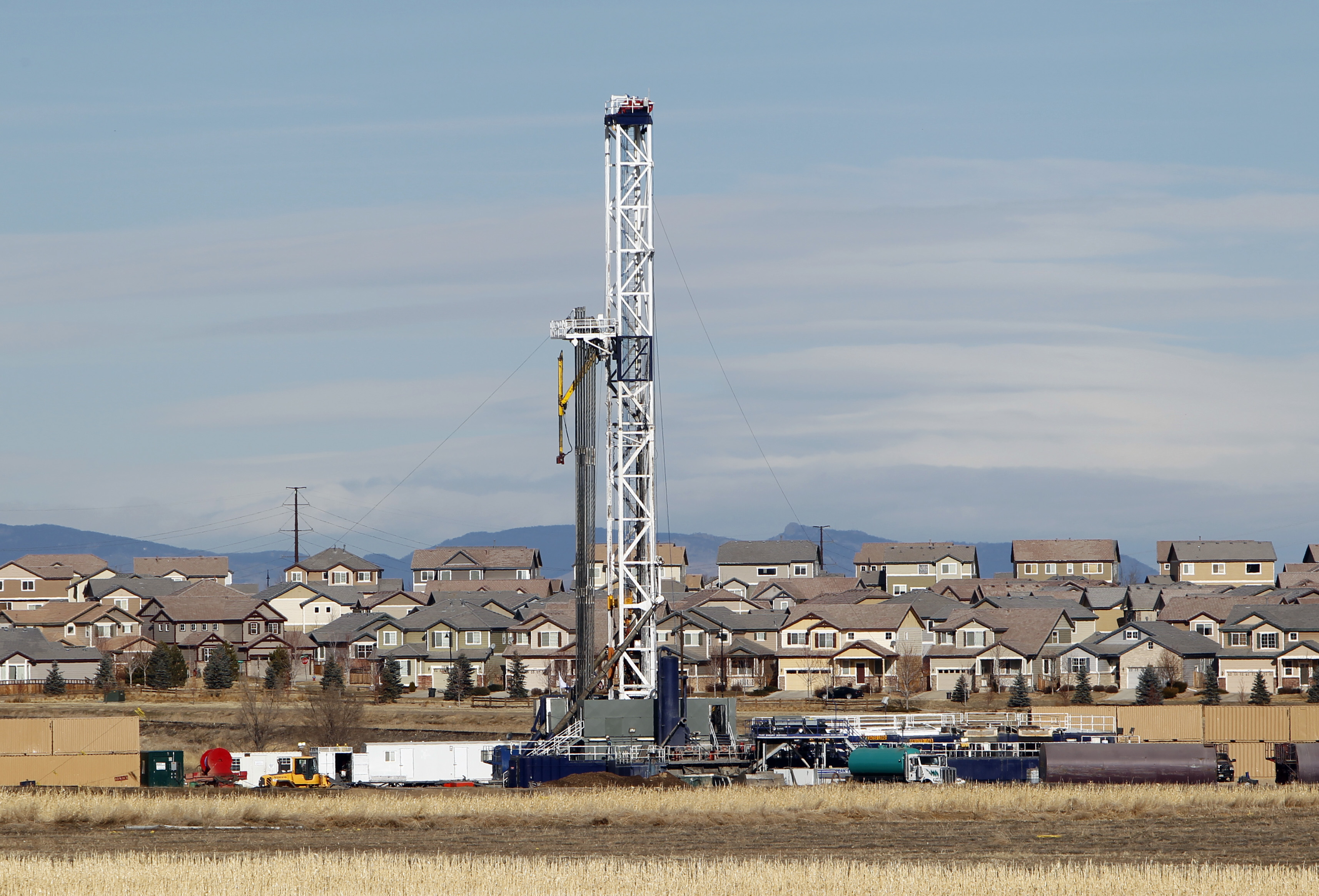
As falling oil prices make headlines, and motorists enjoy cheaper prices at the pump, we hear a lot about the turmoil in for Colorado's energy sector, with production cutbacks and job losses.
But there's fallout from $30-a-barrel oil on Colorado's state and local government budgets as well. One of the most visible revenue streams is something called the severance tax, which is levied on the state's oil and gas industry. It's based off the gross income of oil companies -- there's a tiered structure depending on how much companies make.
- Download: 2015 Colorado Economic And Revenue Forecast
Here's why it matters: The severance tax will bring in 77 percent less revenue this year, or about $62 million. Compare that to more flush times in 2014 when severance tax revenues reached $245 million. And 96 percent of the money came from oil and gas:

One half of those revenues goes to grants for local governments. The other half feeds into the Colorado Department of Natural Resources budget. That's the agency which oversees water conservation, parks and wildlife management, forestry -- as well as the oil and gas industry.
Oil And Gas Task Force Challenges
One of the key challenges for the DNR now is balancing the budget of the Colorado Oil and Gas Conservation Commission, formed by Gov. John Hickenlooper in August 2014 to ease tensions between local governments and the industry.
The task force issued nine recommendations, one of which required adding more inspectors for 2015, said DNR Budget Analyst Bill Levine.
But with the majority of the task force's budget coming from the severance tax and another special tax on oil companies, revenues are down to the point where the agency expects to spend about $4 million more than it will bring in this fiscal year.
Levine said there aren't plans right now to cut back on inspectors amid the budget crunch. And the agency has some reserves to cushion the blow for now. But next fiscal year, which starts on July 1, looks rocky.
"We're on an unsustainable path at this point," he said.
DNR Program Cuts
Maintaining the current level of task force operations is a priority, so that means that other DNR programs could take a hit. One budget solution the agency is mulling could involve diverting some severance money that currently goes into programs like the Water Efficiency Grant Program, The Species Conservation Trust Fund Program, the Low-Income Energy Assistance Program and others.
That could translate into less financial assistance for low-income families on energy bills, less money for sage grouse conservation and less work controlling invasive weeds.
Overall, the cuts to these programs could be at least 40 percent next year, said Levine. This fiscal year, those programs saw a 10 percent cut.
"Certainly there are a number of programs that when all the dominoes fall will see less money," he said.
If all this sounds rough, it's rougher elsewhere. Colorado does not face a fiscal crisis on the scale of oil-rich states such as Alaska, where severance tax accounts for nearly three-fourths of the state's tax revenue. The biggest budget woes are also being felt in Wyoming, West Virginia, Texas, Oklahoma and North Dakota, according to a recent analysis by the Energy Information Administration.
County governments also collect a lot of property tax money based off how much oil is produced. Garfield, Rio Blanco, Garfield and La Plata counties are among the counties that see benefits from this tax.
In recent years, Weld County has collected the largest property tax bill: two-third of county's property tax value right now comes from the oil and gas industry. Weld County Budget Director Don Warden explained there is a two-year lag between the time that oil is produced and the time that the property tax money feeds into his budget.
That means that Weld's 2017 budget could see a 25 percent drop in property tax.
"We anticipated the drop for 2017 and will be able to weather that well," said Warden. "But 2018 is starting to get very scary when we see oil at $28 a barrel."
Warden said Weld County has been socking away much of its oil revenue away in a rainy day fund--that will help offset the losses.
Guessing Game
There are other implications to falling revenues as well -- challenges to basing a large chunk of your budget around a boom bust industry like energy. Late last year, for example, the state signed off on a water plan that calls for $20 billion in infrastructure improvements. A portion of all severance money goes into something called "perpetual base fund," and that goes toward water project loans.
So the budget decisions around severance tax revenues that Colorado has to make won't be easy. And the mercurial nature of the energy market makes precision planning a bit of a challenge. The Energy Information Administration said it expects oil to hover around $38 a barrel for 2016. That seems to contrast predictions from Morgan Stanley, which said it expects oil prices to continue their slide to $20 a barrel.
With oil prices now jig-sawing on a daily basis, budget planners like Warden have no choice but to watch and wait to see what happens.









